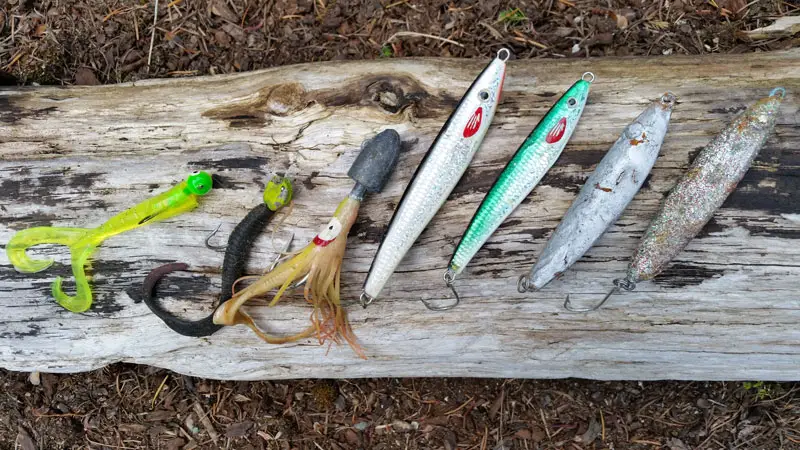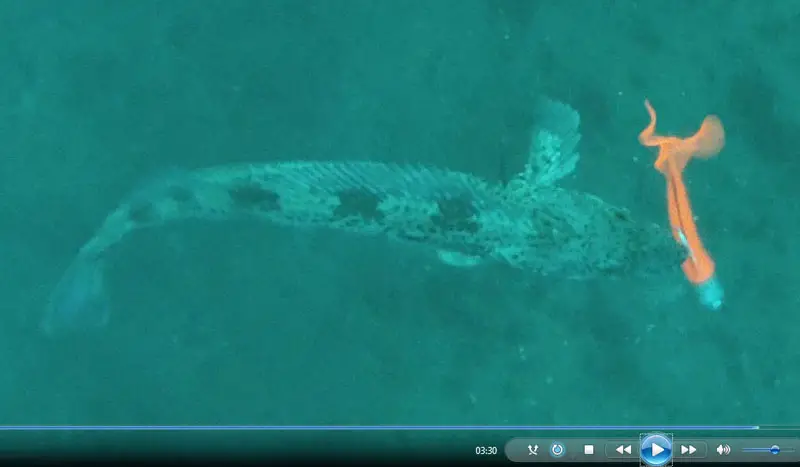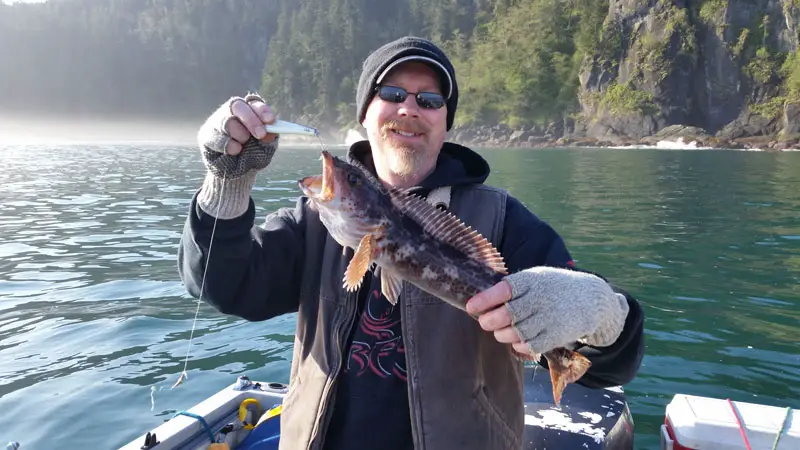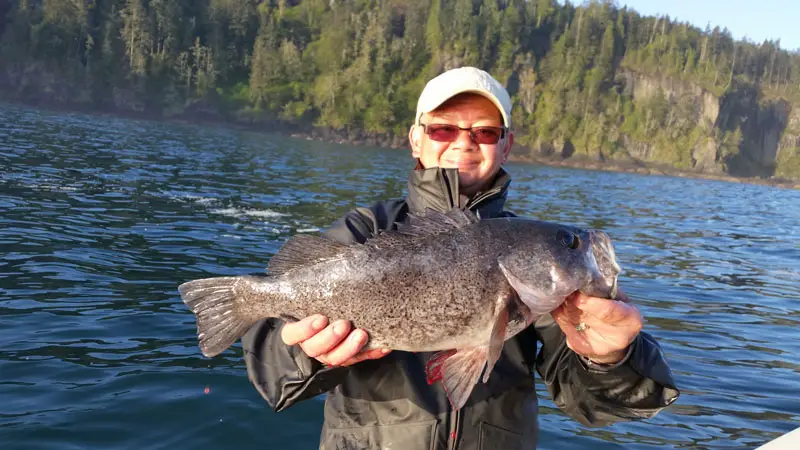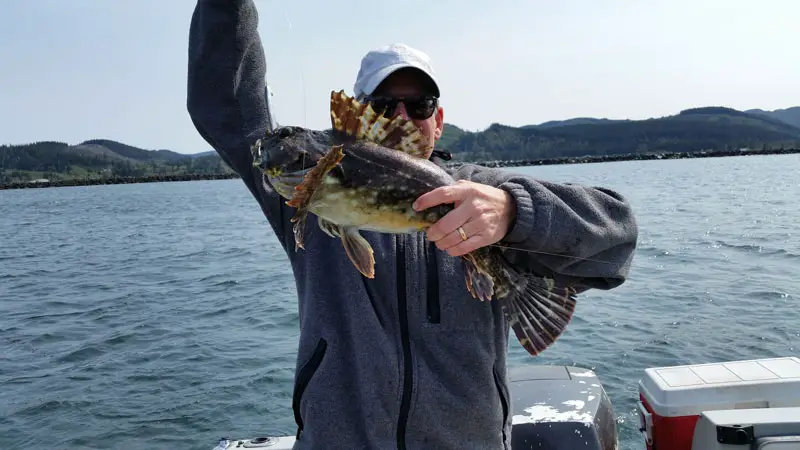Search
Latest Articles
Neah Bay Bottom Fishing
by Mike Carey, April 22, 2015
If you’re not familiar with, or never been to Neah Bay, you are missing a crown jewel of the Pacific Northwest. Located as far west as you can go in the continental United States, Neah Bay is a small little village of a town that has some of the best nearshore bottom fishing waters an angler could ask for. Its fisheries offer small boat owners an excellent chance at catching keeper ling, halibut, cabezon, and other tasty bottom fish a short distance from its sheltered marina. On calm days (which are not uncommon), anglers in open boats can venture out to fish the most scenic rocky shores Washington has to offer. It’s no wonder that so many eagerly wait for April every year to get their chance at trophy lings and limits of delicious black sea bass.
Fishing at Neah Bay in April can be lights out and non-stop action. This year, WDFW regs limit anglers to fishing 120 feet or shallower, in part to protect diminishing quillback rockfish. Once plentiful, these slow growing bottom fish are growing spare and need to be protected. Pulling them up from deeper waters is practically a death sentence for them as their air bladders expand. Fortunately, many anglers are discovering it isn’t necessary to fish deep waters in order to catch keeper lings (those over 22” this year, two fish daily limit). And as it is every year, the kelp greenling and black sea bass remain in abundant numbers to fill out your daily limit of ten bottom fish.
Where to fish is easy – anywhere you see rocky shoreline and kelp beds you’ll run into fish. It’s doesn’t require special skills, and bottom fish will attack anything moving, although there are some preferences you’ll discover as you’re fishing.
Basically, you’ll want a couple rod/reel setups and the proper gear for each.
The first technique we’ll discuss is deeper water and running tides/windy conditions. For fishing 40-120 feet deep I recommend using heavier, stiff rods. The reason is you’ll be vertically jigging rocky, snaggy bottom. You are going to want to have enough weight to get down to the bottom, and then to be able to feel the bottom so you don’t lose too many jigs (because you will lose jigs). I find 3-6 oz jigs work for under 120 feet depth. I limber rod won’t cut it here. You need strong and sensitive. The second part of your set up is a good reel loaded with braided line. I would go with 30-50 pound braid. Braided line is super fine in diameter and offers less resistance in the water, allowing your jig to drop to the bottom quicker and staying down easier. It also has zero stretch, which means you’ll be able to feel your jig when it bounces off a rock, and quickly bring the jig up so as to not snag up. Attached to the braid I use a medium sized barrel swivel, and then a couple feet of 20 pound mono. This is your “break-free” line. When you do hang up on a rock, you’ll want to be able to break off easily. Tying your lure directly to the braid is just asking for a disaster, like having that rod yanked right out of your hands! Some will say twenty is too light, that a big ling will chew right through it. As long as your break off line is lighter than your mainline you’ll be OK. Just be sure to point your rod straight down at the snag so you don’t break or lose your rod. Tighten the drag and the wind/tide will do the work off breaking you off.
Gear doesn't have to be fancy - bottom fish aren't picky
The proper jigging technique is simple but like anything, practice makes it easier. When you feel yourlure hit bottom, crank up a couple turns and jig as vertically as you can. You want to “check in” with the bottom from time to time, and as you gain confidence you’ll do this more often. It’s a deadly technique for ling cod as they will hang out in crevices and spaces of the rocky bottom, and when your jig drops in to a crevice and you jig it up and out, they can’t resist going after it! But, as you can imagine, this technique takes its toll on your tackle supply. Proper technique is a must to save your gear. If the wind or tide is moving your boat too fast and your line starts to drag back, reel in and drop again. It’s better to re-set your gear periodically than it is to drag and lose it to the rocks. Other options to slow down a drift include using your kicker motor in reverse to back up, or getting a sea anchor to slow you down. Both options work well. I prefer a sea anchor to having a motor running all day. Part of the allure of fishing this area is the sounds of the waves crashing into the rocky shoreline, and the birds crying overhead. I don’t need a kicker motor ruining it.
A small ling tries to take on a big jig.
OK, you’ve got the technique down. Suddenly your rod is yanked down – HARD! It’s not a snag, but it will be soon. Because that ling is going right back where he came from, back into his hole, with your jig hooked to his lip. Don’t let him! This is where that heavy rod and braid come into to play. You need to horse that fish up and away from those rocks! These lings are incredibly strong fish as you’ll quickly find out. So don’t be afraid to put the pressure to him. It’s not like playing a salmon or steelhead where it’s OK to let the fish run. Most big lings are lost in the first 20 seconds of battle (yes, that’s my made up statistic). Seriously though, get that fish up and away from the rocky bottom. Then it’s ok to let him run line out of your drag. And he will, too. The bigger the fish the stronger – even those 24-26” fish will give you a good tussle. Keep up the pressure, and once you get him up to the boat it’s all on your netting buddy. When you have your ling in the boat, confirm he’s a keeper, rap him on the head, and bleed him out. Ling cod are among the best tasting white flesh fish in the Pacific Northwest, but do take good care of your catch. Rap, bleed, and ice for maximum taste appeal.
Lot's of sub-legal lings to be found, and a few keepers as well
Whew! OK, that’s the vertical jigging technique. However, when you fish the Neah Bay area, you’ll want to give your arm a rest from jigging and try the second technique, which is way fun in its own right, and super easy. We’re talking light rods and small jigs, that’s right, its sea bass casting time. Now you’ll want a light 6-8 foot rod, spinning reel, 3/8 ounce jig heads, and plastics. Curly tails, double tails, tubes, bass worms… it doesn’t matter. And color doesn’t matter (much). I do prefer darker colors like purple, rootbeer, and browns, but pearl can be deadly, too. Fish in 20-50 feet, cast in toward the rocky shoreline or kelp beds, and give your bait a slow count down of 5-10 seconds. Then, a twitch, a jerk, and hesitation, watch for it on the drop, and BAMM, sea bass on. It’s that easy. Along the way you can expect to get smaller ling cods and also kelp greenling (tasty in their own right). In no time you’ll fill out that ten fish limit. Or not. On our trip we imposed first a 14”, then 15”, then 17” minimum size limit on the prolific black sea bass. We ended up not catching limits, rather we limited our catch. Let’s not waste the resource, and those smaller sea bass next year will replace the big guys you take home.
Robbie with a nice black seabass
A couple words on safety. I did start this article mentioning Neah Bay can be great for the small boat angler. That said, remember, it’s the ocean. Conditions can change and quick. Always have up to date information on tides, wind, and weather conditions. Wear a life jacket. Stay around other boats. And if you are venturing close in shore to those rocky cliffs and kelp beds, I recommend you do keep a motor running for a fast get away. Be aware that not only are there waves, but of great concern are ocean swells, especially big, random swells. So even on calm days keep one eye glued to seaward for safety.
If you’re looking for a place to stay, we like the Snow Creek Resort. It’s rustic and basic, but has cabins that will house five anglers, tent camping, warm showers, and a rail launch (which opens in May). Not to mention a million dollar view, that is actually quite priceless.
Bonus Catch! A keeper Cabezon.
